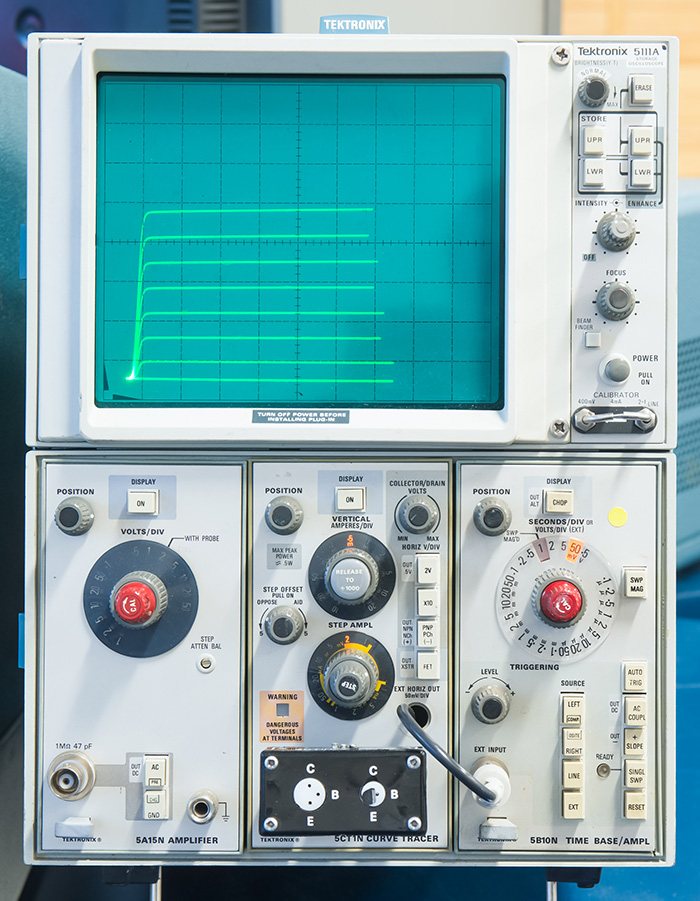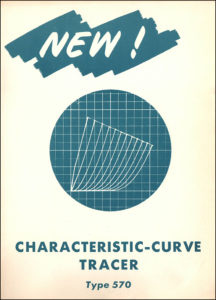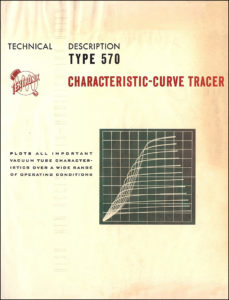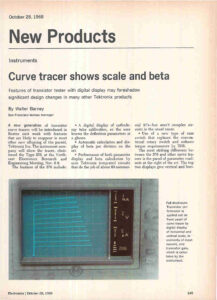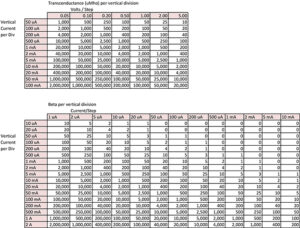Tektronix first curve tracer was the 570 and was introduced in 1955 to display the characteristic curves for tubes. These curve tracers are highly sought out by audiophiles for matching tubes and command high prices. These two brochures describe the 570. Click on the images to view the PDFs.
All subsequent Tektronix curve tracers were to display the characteristic curves for transistors. Transistor curve tracers are marvelous instruments. They feature two sockets for devices and a switch to select between them. This can be used to match devices. They display voltage-current curves so can be used to show the characteristic waveforms for bipolar and unijunction transistors and FETs, diodes, tunnel diodes and zeners, SCRs, resistors, and other devices. They can be used to check capacitor leakage, restore and charge rechargeable batteries, bring up and help locate shorts in PCBs, and a variety of other troubleshooting tasks.
The Measurement Concept book Semiconductor Device Measurements was first printed in 1968 and is devoted to curve tracer measurements on a variety of devices. This book is available used or as a PDF file on CD on our eBay store.
This ad for the 575 transistor curve tracer appeared in the July 5, 1962 of Electronic Design.
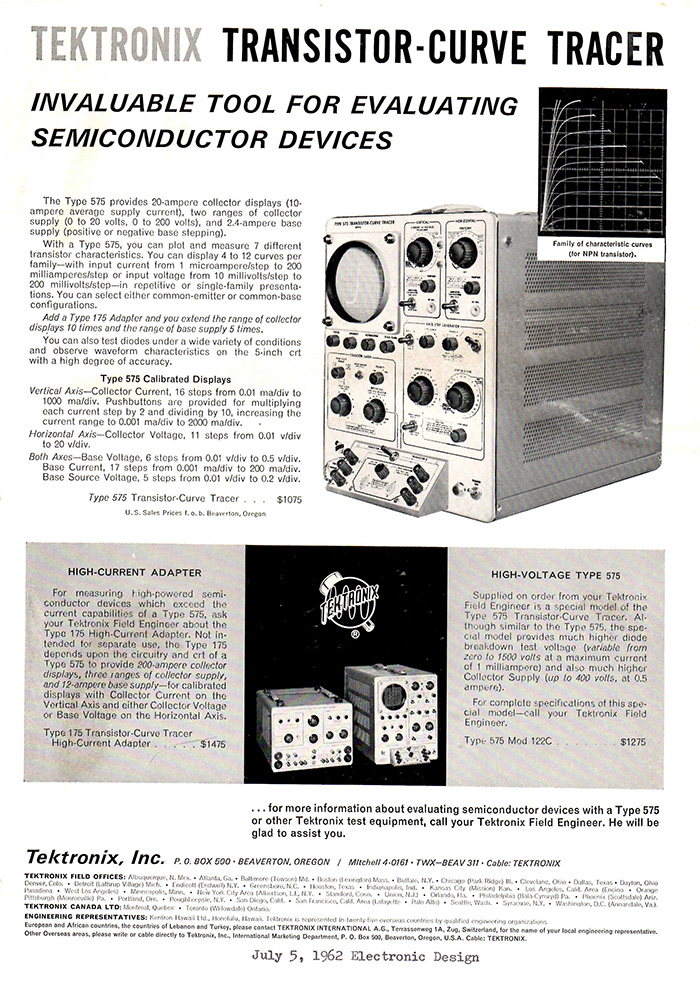
This August 1971 brochure covers the various transistor curve tracers. Click on the image to view the PDF.
Tektronix last curve tracer was the 577. Although Tektronix no longer manufactured curve tracers, Sony/Tek manufactured their own for the Japanese market for some time. Now Keithley manufactures the 2400 series of Source Measurement Units which can provide current/voltage characterization for two terminal devices. Coupled with Keithley I-V Tracer Software it can provide the familiar user experience of a curve tracer for two-terminal devices. External link
The museum has four curve tracers on display and one in use. The 570 curve tracer was the only instrument for characterizing vacuum tubes. This photo shows the characteristics for a 6C4 triode with the exponential-characteristic curves.
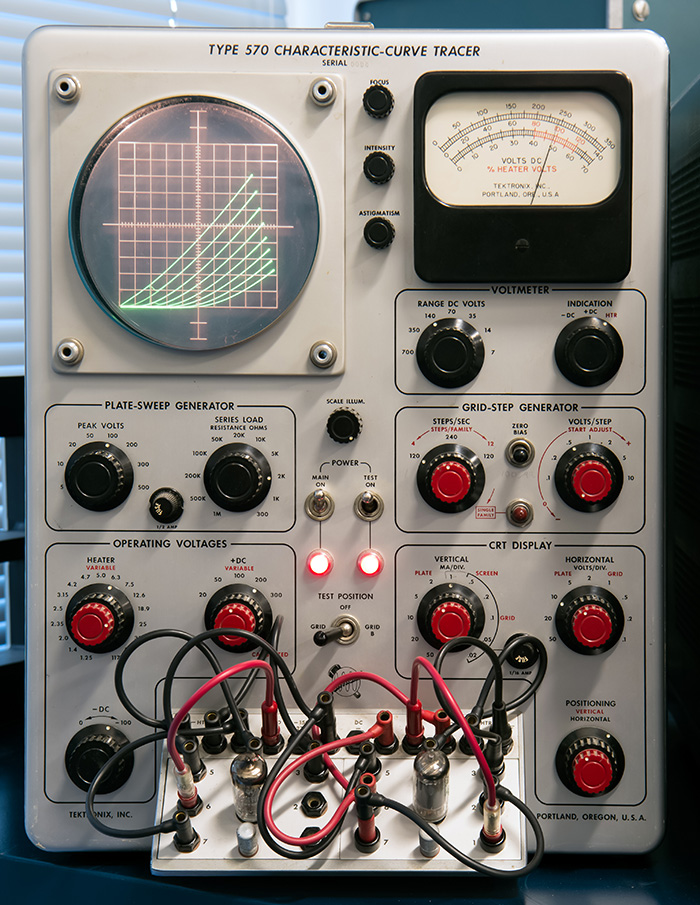
This photo shows the 570 with a 6AU6 pentode showing the flatter characteristic curves.
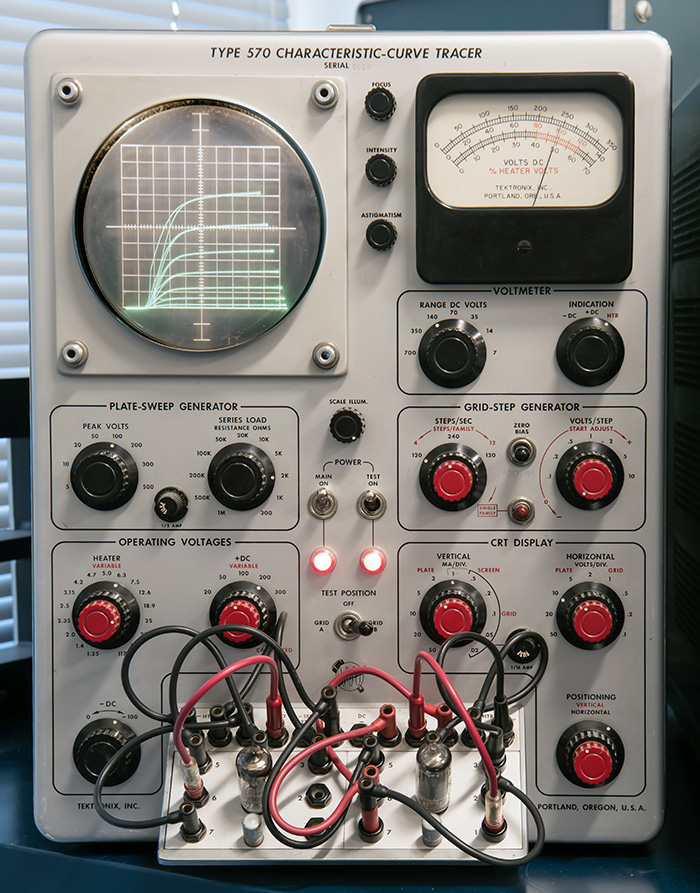
The first curve tracer for transistors was the 575 which was introduced in 1957 and had a long production life until replaced by the 576. The 575 was finally phased out in 1972. John Kobbe had a instrumental role in the development of both the 570 and 575 curve tracers.

The 576 curve tracer is not on display in the museum but is used for repairs in our restoration room. The 576 was introduced in 1969 and features a novel display readout using fiber optics and incandescent bulbs to display key operating parameters directly (see Fiber Optic Readout for more information). These readouts allow setup information to be captured in a screen photograph for future reference.
The 576 can deliver 220 watts of power to the device under test with voltages as high as 1500 volts. There was a protective cover over the device under test with a safety switch for elevated voltages. Most of the protective covers have been removed as on this curve tracer. The 576 was phased out in 1978.

This October 28, 1968 Electronics reviews the 576 and the fiber-optic display. Click on the image to view the PDF.
The 577-D1 (with a storage CRT) was introduced in 1974 and does not have the direct readout features. There was also a 577-D2 without the storage CRT. The 577 can test devices up to 1600V and up to 10A at the lowest voltage setting. Both models were in production until at least 1985.
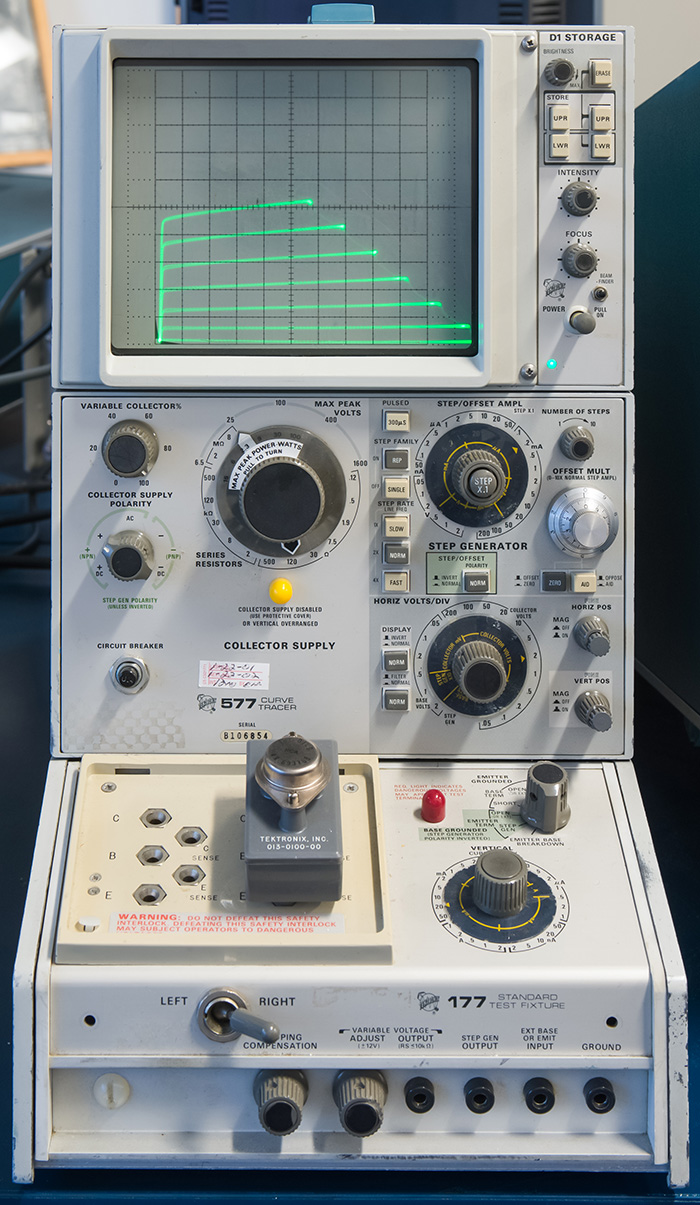
The 577 does not provide a direct readout of settings and parameters as does the 576. One of our volunteers made this chart to determine transconductance and beta from the control settings. Click on the image to view the PDF.
The museum also has a 5CT1N plugin curve tracer for the 5000 series scopes. This plugin was introduced in 1972 and was in production until at least 1985.
